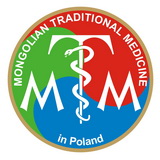Iowa crop farmers are battling an old problem with potentially new and devastating repercussions for the entire state’s agricultural economy: Herbicide-resistant weeds.

Creative Commons photo by jeffbalke via Flickr
The phenomenon is not all that new, said Mike Owen, a weed specialist at Iowa State University who has been discussing herbicide-resistant weeds since the 1980s. But widespread adoption of certain biotech advances have made matters much more complicated.
It has only been in the last few years that crops have been selectively engineered to tolerate topical application of active ingredients in a specific herbicide. The resistance that weeds have developed to that ingredient — called glyphosate — combined with its widespread adoption, has the potential of costing Iowa producers millions of bushels of produce, and severely crippling the state’s ag-based economy.
An herbicide with glyphosate was introduced by the Monsanto Co. in 1974 under the commercial name Roundup. Roughly 18 years later, the company introduced its first biotech crop, Roundup Ready soybeans, which would tolerate direct application of the glysophate-based herbicide. Modified corn was introduced two years later.
When these glyphosate-resistant crops came onto the market, many hoped and some believed that another herbicide or genetically-modified crop wouldn’t need to be developed. However, over time, crop farmers encountered more and more glyphosate-resistant weeds, and no new herbicide ingredients being developed to control them. Within a decade, some environmental and consumer groups were beginning to question the safety of the Roundup Ready crop line, specifically pointing to the emergence of “super weeds.”
Despite the concerns voiced by some, and increasingly aggressive tactics by Monsanto to protect its seed patents, use of the Roundup Ready crop brands were widely adopted by farmers in Iowa and throughout the nation. While each individual grower had his or her own specific reasons for changing to the Roundup Ready system, Owen believes that larger scale operations’ search for simplicity and convenience as well as corporate marketing played key roles.
“[P]art of this is definitely the issue of scale. Growers are looking at time management. They are looking for simplicity and convenience because of the scale that agriculture has achieved over the past 10 years,” Owen said. “We also need to look at how the marketing has influenced the growers’ decisions. Certainly marketing campaigns are very influential in the decisions that growers make. They are very persuasive, and they are very pervasive in the marketplace.”
From television to radio to numerous ag-specific print publications, Iowa’s rural community has been bombarded by a wealth of advertising by corporations that need growers to adopt their systems. As agriculture has grown, and larger growing plots have become more time-consuming for producers, the companies have successfully highlighted the aspects of their products they believe will most appeal to producers.
“These are very powerful and very desirable things in the marketplace. Convenience and simplicity are both very useful and very important; however, they are also something that have considerable risks associated,” he explained.
Although it might seem logical to point an immediate accusatory finger at either the modified crops or the herbicides as being the key forces behind the problem, Owen warns that while both might play an indirect role, neither are fully or totally to blame.
“The predominant system that has emerged in Iowa is based on glyphosate-resistant crops, and the subsequent use of glyphosate,” he said. “Now, as a result of that, we are beginning to see weeds that no longer respond to that herbicide. The question becomes if this resistance is because we are planting these crops. No, because the trait that dictates resistance to glyphosate is essentially benign in the environment. Is the herbicide causing the problem? The answer to that is directly no, but indirectly yes.”
If the situation cannot be fully placed on the back of the crops or herbicide, what or who is to blame?
“The who or what is the manner by which the growers decide to use the technology,” he said. “Their decisions are influenced by obviously their own interpretation and assessment of the technology, but also influenced by the marketing that the corporations use to move their proprietary traits and herbicides into the grower marketplace.”
While Owen has no doubt that farmers and producers are some of the best stewards of our land, water and overall environment, he is also concerned that they are not seeing the big picture when it comes to management and control of weeds.
“In relation to some of the obvious issues that reflect land and environmental quality — tillage, waterways and things like that — I think [growers] can foresee long-term problems, and they do make stewardship efforts once those issues are identified,” Owen said. “In relation to weed management and the potential evolution of resistant weeds, however, I don’t think they fully understand the implications of the practices that they use or anticipate the severity of the problems that may result”
To some degree that is the industry’s fault, Owen said, because “historically we have always been able to come back with a better tool, a new tool, that would take care of those problems. What we’ve found ourselves in now is a situation where those tools are not readily available and they are not, at least in the near future, observable.”
There needs to be a renewed understanding on the part of growers that “what we’ve got is what we’ve got, and there’s going to be nothing — that is, the Lone Ranger isn’t going to come riding in on Silver to fix the problem.”
There is no new silver bullet, he said, so growers need to take care of the tools that they have.
“I think we can do this and, as it turns out, based on what I’ve observed, we can actually make money by using some of the practices that provide better diversity of management practices for weed control,” he said. “But growers, at least at this point, just don’t seem to be accepting this message for a number of different reasons.”

Chart showing soybean farmers who believe higher rates or application frequency of glyphosate is required for weed control (Source: Iowa State University/Iowa Soybean Association).
Although glysophate-based herbicide had been on the market for a number of years, the 1996 Field Crops Summary conducted by the U.S. Department of Agriculture indicated that less than 1 million pounds of the herbicide were applied to roughly 15 percent of Iowa soybean fields — a figure well be below what was being used at the same time by farmers in Illinois and Indiana.
In 2006, however, use by Iowa farmers had skyrocketed to more than 12 million pounds on nearly 90 percent of all soybean acreage — and had out-paced use by any other Midwestern state known for soybean production. Not only had the percent of Iowa’s land use for soybean production increased during that time frame, but the statistics clearly show that producers were more than doubling the amount of glyphosate that was initially used for weed control.
Just as diseases can evolve resistance to antibiotics, weeds can evolve resistance to herbicides, prompting more frequent application to provide adequate control and maintain crop yield potential. Glyphosate-resistant weeds are now established in 19 states and deemed a serious economic concern — both for the increased cost to destroy the weed, and for the potential to drag crop yield.
Currently there are at least 15 different types of herbicide-resistant weeds in Iowa. The first, Kochia scoparia, was reported in 1985 with a resistance to atrazine. The most widespread glyphosate-resistant weed in the state is common waterhemp, which infests an estimated 1,000 to 10,000 acres. The most recently discovered glyphosate-resistant weed, identified just last year, is giant ragweed (Ambrosia trifida). It is estimated by state weed scientists that there are 1,210 sites and more than 12,400 acres invested with herbicide resistant weeds in Iowa, and that they infest corn, railways and soybeans.
Although those figures may seem striking to a person who is not familiar with the problem of resistant weeds, the truth is that Iowa has fared much better than Southeast states. For instance, producers in Macon, Georgia abandoned about 10,000 acres of cropland in 2007 following an infestation of glyphosate-resistant Palmer amaranth, a member of the pigweed family.
“My sense is that we are going to see more weed problems if growers continue to rely only on glyphosate,” said Owen. “If the only thing they are planning to do this year is use glyphosate, then I would suggest that they may have greater problems with weeds this year than what they may have had last year.”
For now, there are other options available to farmers — options they should use wisely, Owen said. Despite the initial cost of using a soil residual pre-emergent herbicide, Owen believes there is a significant yield boost associated with the application. He and his colleagues at Iowa State University have developed a 2010 Herbicide Guide for Iowa Corn and Soybean Production that outlines and highlights some of the best practices they have used for maintaining crop profits.
“Just as an estimate, if growers are only using glyphosate, and if they are making application at only particular instances, they are likely losing five or so bushels of soybeans per acre. And there are similar, if not higher, numbers of bushels of corn being lost,” he said. “If your project that over all the acres — five bushels of soybeans over 9 million acres of soybeans produced — then you are looking at 45 million bushels of soybeans that may be lost because of poor timing of weed management. Although that’s just a ‘back-of-the-envelope’ projection, it seems reasonable based on some of the modeling routines that we’ve done.
“Suffice it to say that it is a butt-load of money.”

 Chart showing soybean farmers who believe higher rates or application frequency of glyphosate is required for weed control (Source: Iowa State University/Iowa Soybean Association).
Chart showing soybean farmers who believe higher rates or application frequency of glyphosate is required for weed control (Source: Iowa State University/Iowa Soybean Association).















